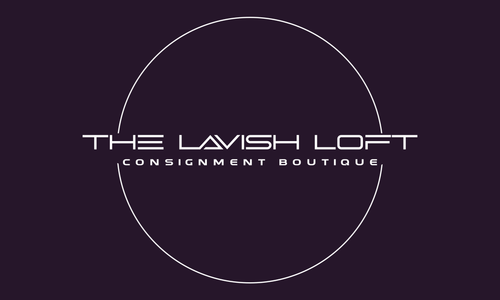HERMÈS
Hermès International, sometimes also referred to as Hermès of Paris or Hermes, is a French luxury goods manufacturer. It has been consistently ranked as the world’s most valuable luxury brand in different valuation and ranking studies published by leading consultancies. Hermès as a brand enjoys an iconic status in the world of luxury. A combination of rich heritage, exquisite craftsmanship, eye for detail and high levels of quality and professionalism through the entire manufacturing process gives Hermès a position of superiority in the very competitive and ruthless world of luxury.
According to global brand valuation firm Interbrand, Hermès came in 28th amongst the Best Global Brands 2020. With a brand valuation of USD 18.0 billion, it trails behind Louis Vuitton, ranked 17th with a valuation of USD 31.7 billion.
Hermès is not a conglomerate in the real sense of the word and does not own a portfolio of brands like its key competitors, which include LVMH, Richemont and KERING Currently, the range of products under the Hermès brand name includes leather goods, lifestyle accessories, furniture, fragrances, watches, jewelry, ready-to-wear and saddlery.
The leather goods and saddlery category is the biggest contributor to the company’s revenues (50%), followed by ready-to-wear and accessories (23%), and silk and textiles (9%).
BACKGROUND
Thierry Hermès founded the company in 1837 as a harness workshop in Paris. Originally, his intent was to serve the needs of European noblemen by providing saddles, bridles and other leather riding gear. In the early 20th century, Thierry’s son Charles-Émile Hermès moved the company’s shop to 24 Rue Du Faubourg Saint-Honore in Paris, where it remains to this very day and is the company’s global headquarters.
Gradually, the company’s product offerings expanded through generations. Between 1880 and 1900, it started selling saddlery and introduced its product in retail stores. In 1900, the company started selling the “Haut à Courroies” bag, which was meant for riders to carry their saddles in it. In 1918, Hermès introduced the first leather golf jacket with zipper, made for the then Prince of Wales. In the 1920s, accessories and clothing were introduced into the portfolio. In 1922, the first leather handbags entered the product line. The brand’s travel bags introduced in 1925 were a global success. In the 1930s, Hermès introduced products that have now entered the annals of fashion as icons – the leather Sac à Dépêches (renamed as the “Kelly bag” after Grace Kelly) in 1935 and the Hermès carrés (scarves) in 1937. In 1949, the first Hermès silk tie and the first perfume ‘Eau d’ Hermès’ were introduced.
In the 1930s, the company entered the United States with an initial tie-up with the Neiman Marcus department store in New York.
The company’s iconic duc-carriage-with-horse logo and signature orange boxes were introduced in the 1950s. In the 1970s, the company established a watch subsidiary La Montre Hermès in Bienne, Switzerland. The company acquired tableware manufacturers like Puiforcat, Saint Louis and Perigord in the 1980s and consolidated its position in these segments of the luxury market.
The eye of the ultra-premium luxury segment, the “Birkin bag” was introduced in 1984, after a chance conversation between the then CEO Jean-Louis Dumas and actress and singer Jane Birkin on a flight from Paris to London, who articulated to Dumas that she needed a medium-sized bag. Each Birkin costs between USD 12,000 to USD 300,000 and is the exquisite handiwork of a single craftsman, who takes between 18 to 25 hours to complete the job via hand, more if the hide is a delicate crocodile skin. In 2014, an extremely rare Himalayan Nilo crocodile Birkin bag sold for USD 185,000, becoming the second most expensive bag to be sold at auction. Hermès is infamously known to burn imperfect Birkins, showcasing its dedication to the finest quality.
In 1993, the company went public on the Paris Bourse, which for various reasons was considered a strategic move with its own set of weaknesses. Throughout the late 1990s, Hermès extensively followed a strategy of reducing franchise stores, by buying them up, closing quite a significant many and by opening more company-operated stores. As of 2019, Hermès operates 311 stores globally, out of which 223 were directly owned and operated by the company.
In 1976, Hermès entered into an arrangement with British luxury shoemaker John Lobb, wherein it was allowed to use its name in return for extending the distribution reach of the brand. In 1999, in one of its first non-brand moves, Hermès bought a 35 percent stake in the Jean-Paul Gaultier fashion house.
Over a period of time, the company has extended its reputation by entering into strategic collaborations with specific players and also its suppliers in the ultra-luxury segment. These include:
- Setting up a joint venture with Faubourg Italia, in which Hermès holds a 60 percent share, to extend reach into the premium home furnishings segment (upholstery fabrics and wallpapers)
- Holding a 30 percent share in J3L, an old French supplier of metal parts to the company
- Holding a 39.5 percent stake in Perrin & Fils, which is a specialist textile weaver in a variety of categories, which include lingerie, furnishing fabrics, ready-to-wear and accessories
- Holding a 25 percent stake in Vaucher, which is a manufacturer and supplier of movement parts for high-end precision watches
- Acquiring a 40 percent stake in Bettina, a long-standing partner of the company who specializes in production of twillaine.
Today, the brand operates 311 stores globally across the U.S., Russia and Asia and has over 15,000 employees. It is one of the largest and most admired luxury makers in the world with revenues of over USD 8.3 billion and profits of over USD 1.8 billion as at 2019. The stellar performance of the brand throughout its 183-year history is largely credited to its drive for strategic consistency, combining excellent creativity with craftsmanship as well as an unrelenting focus on the long-term against short-term benefits.


